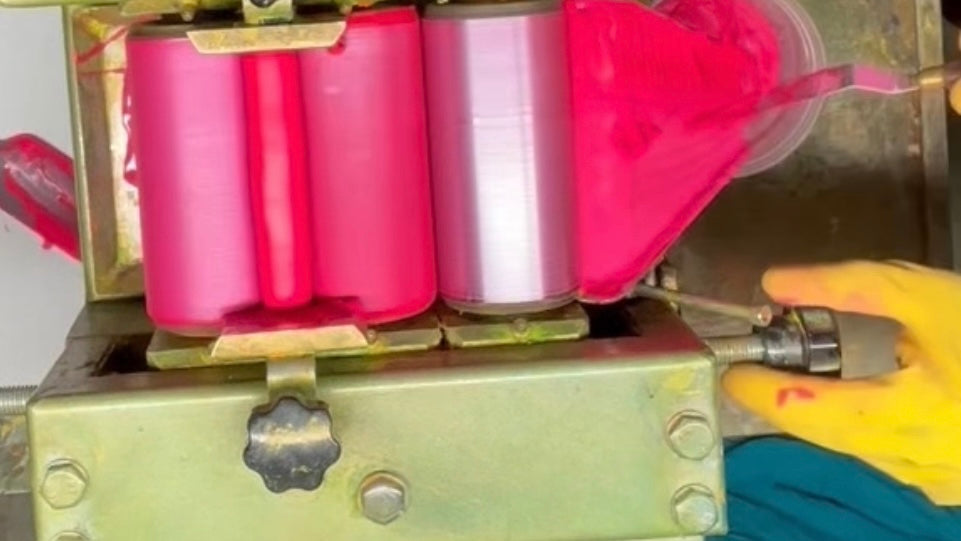
What handcrafted means to us.
At Gapka, we call our paints handcrafted. Some people ask how that can be true when we use a mill.
It’s a good question.
The short answer is: the mill is an extension of the paintmaker’s hands — not a replacement for them.
Think of a chef and a knife. The knife doesn’t do the work alone — it’s the skill, experience, and small, constant adjustments of the chef that creates a perfect cut. The same goes for making paint.
When we work with pure pigment and no fillers, each batch behaves a little differently. Some pigments are soft and fine. Some are gritty and stubborn. Some need only a few passes on the mill. Others need careful coaxing over time. There’s no one-size-fits-all recipe. It takes constant attention: adjusting the pressure, the speed, the way we feed the paint through. Watching. Listening. Feeling.
It’s not the mill doing the work — it’s the person behind it.
(If you’ve seen our videos, you’ll notice we often show the final milling passes. Sometimes we even take our hands off the mill for a moment to grab a shot for the camera. But behind every video is hours of close, careful work.)
Using a mill helps us honor the material. It brings out the depth of the pigment without crushing its character. But it doesn’t replace the skill, or the patience, or the hands guiding it.
That's why, even with a mill, every tube of Gapka paint is still truly handcrafted.
Pablo milling neon pink with a handsfree birds-eye-view.
